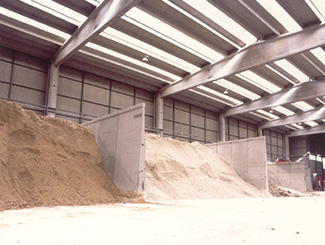 by Alfredo Ballarini27
Marzo
2014
by Alfredo Ballarini27
Marzo
2014
The industry of raw materials for ceramics: an analysis
The industry of raw materials for ceramics has been observed through a representative sample of 40 companies. The survey has showed a decrease for the year 2012 of about 2.04%, bringing sales from 1,254 to 1,228 millions and reducing EBITDA, which falls from 10.94% to 8.39% of the produced value, due to a higher impact of the cost of labour and of surplus value. Amortization is rising in absolute value as well as percentage, reflecting the rise in real estate investments. As a consequence EBIT has been halved and tax burdens are rising, counting for 4% on produced value. A reduction in taxation has prevented the net profit (which has already fallen of a third) from a further decrease. Over a three year period the dividends’ pay out seems to get to the lowest level, so that capitalization rises from 47.63% to 48.96%.
Financial exposure remains well balanced though showing a rising trend. Free cash flow is getting better for the third time in a row, a clear signal finance is well managed. Collection and payment schedule are unbalanced. That is due to a well established tradition of procrastination in the ceramic tile industry as well as to the current difficult economic moment which urges economic operators to look for financial resources everywhere.
Forecasts on profitability show a more likeable impact of EBITDA, especially so when a loss trend is more easily manageable and less structured. EBITDA has a 54% chances of going back to – and even overcome – 10% of impact on produced value, and only a 2% chances of getting down to 6.5% (or even lower); the remaining 44% chances see EBITDA in a range between 6.5% and 10.3% of produced value.
Summarizing the field’s economic and financial scenario through a unified rating process we would have (by simplified calculation) a Standard & Poor’s AA- rating.